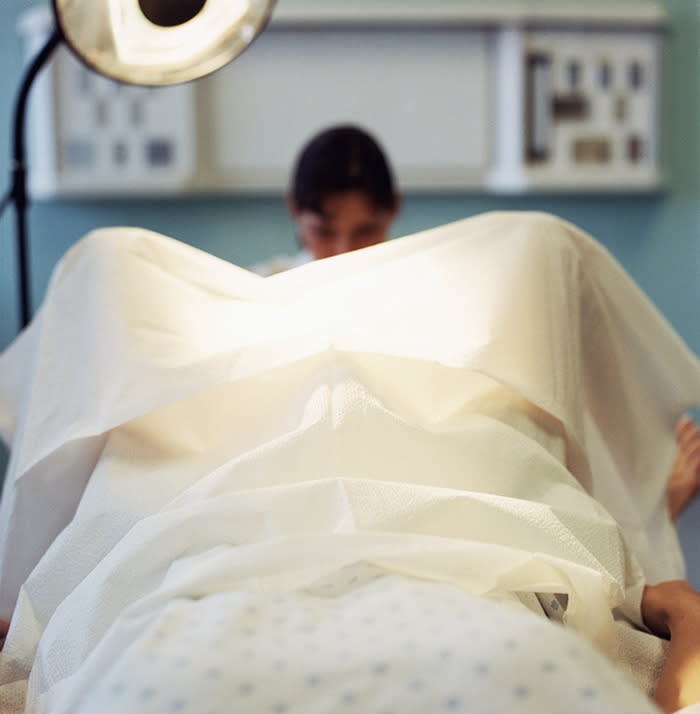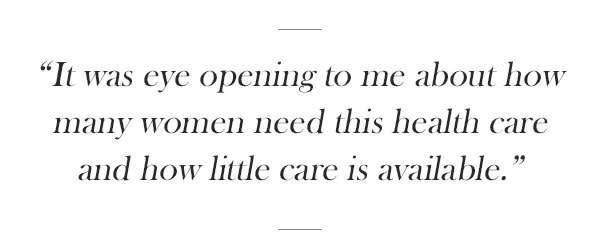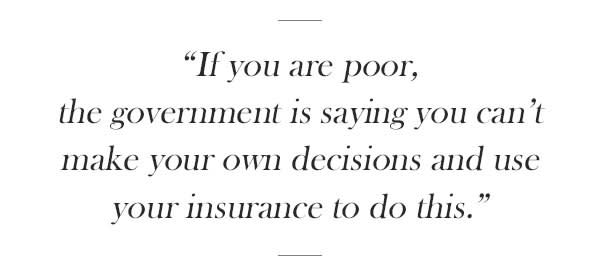5 Voices on the Hyde Amendment’s 40th Anniversary

Photo: Getty Images
The Hyde Amendment, the legislative rider that bans federal funds from being used for abortion care, turns 40 tomorrow. It has been attached to every annual appropriations bill since 1976, and as a result, everyone from women who are insured through Medicaid to women in the military and women in military families to women who receive their health care through Indian Health Services to federal employees to Peace Corps volunteers is prevented from having access to abortion care coverage through their insurance, facing potentially devastating costs — and potentially devastating long-term economic consequences — should they need this form of health care at some point in their lives.
This year’s Democratic Party platform as established at the Democratic National Convention in July in Philadelphia calls for the repeal of the Hyde Act, the first time a major party has included such a call in their platform.
And it’s not surprising — new polling released on Thursday by Public Policy Polling (PPP) finds that a majority of voters in swing states say they are less likely to vote for a candidate running for office who supports defunding Planned Parenthood, indicating that now, more than ever, voters — including registered independents — are in favor of ensuring that abortion care is safe, legal, and accessible to all who need it, and especially those who might already face barriers to care.
Below, a number of voices from different areas of expertise and experience discuss the realities of the Hyde Amendment at 40 — and what they each wish more Americans would know about the act and its real-life implications on everyday people.
Alicia, a military wife
I had never really heard of the Hyde Amendment before I encountered it myself, but I did know that Tricare [the insurance coverage offered to active military and their families] did not pay for abortion in almost all cases. But naturally, to me as a married woman, I didn’t feel it was something that would ever affect me, because I happened to fall into the false notion that abortion only happens with unintended pregnancies and that a married woman with a stable income and a loving relationship wouldn’t ever need an abortion. I thought that even an unintended pregnancy wouldn’t be a crisis in my family.
We welcomed our first daughter in July 2013. Right around when she became a toddler, we started having the conversation about how close in age we wanted our children to be. I wanted our children to be closer in age, so they could really relate to each other. In May 2015 we found out that we were expecting and were so excited — we started looking at nursery things, picking out names. My daughter had just turned 2 and was reading stories to my belly at night and giving my belly kisses.
In August 2015 we went in for a routine anatomy scan. We thought the biggest piece of information we were going to get that day was whether we were having a baby brother or sister coming. It was at the same facility — Walter Reed Hospital in Bethesda, Md. — where we had all the screening done for our first daughter.
We found out we were having a girl and were overjoyed. But our excitement lasted about five minutes. The sonographer turned to us and said, “I see something wrong with the baby’s heart. I’m concerned, and I’m going to leave the room. I’m going to speak with the doctor and will be back with the doctor.”
We learned that our daughter had one of the most severe heart defects there is. I saw a pediatric cardiologist that day too. When the doctor walked in, he was shaking like a leaf. When the pediatric cardiologist is shaking because he’s that nervous, you know you have a really severe case.
[We then learned that] if we went with termination, it would be an out-of-network expense and that Tricare would not cover it and that they could not do it for me there at the hospital.
We were already in the thick of a crisis. We already had so much news to digest. And here we were faced with the biggest decision we would ever make as parents and were told, “Here are all of your options — but if you choose this option, here’s where all of your support stops from us [because of the Hyde Amendment].” I felt so powerless. My opinion and what I felt was best for my body and my baby and my family was not supported.
I prayed every day her heart would stop beating on its own so I wouldn’t have to make this decision. She had calcification on three of the four chambers of her heart. She had fetal hydrops, with a 99 percent mortality rate. We were told [that if she survived birth], she would struggle with a series of heart attacks, seizures, and strokes until one was strong enough to take her. She would struggle to eat and breathe, the most basic tasks in life. As a parent, I knew this wasn’t an existence I wanted for my child — from her first breath to her last, she would suffer. That was no quality of life. Life is more than a heart beating in a body.
Because of how far along I was, very few clinics could help me. In the state of Virginia, a woman seeking an abortion after 12 weeks must have it done in a hospital, and I didn’t even know what hospitals to reach out to because my care was all handled through the military. I had to start looking out of state to have the procedure done. I ended up having to travel all the way to New Jersey. We had to drive over 250 miles to get the care we needed. It was the first time I had ever been away from my daughter overnight — and my first time being away from her, I was losing my other daughter.
There was only one doctor at the clinic who performed abortions after 18 weeks, and there were more than 10 women there that day having advanced D&Es done.

I thought about how many women couldn’t get what they needed because they couldn’t be fit into a schedule. Maybe they called too late and the schedule was full.
The Hyde Amendment took our crisis and made it worse. My husband has been serving our country for 10 years. In our crisis, we were not adequately supported and told we were not trusted to make our own medical decisions with the advice of medical professionals. There was the stigma of abortion hanging over us, the idea that abortion was morally wrong. The message being given to us was that we were doing something immoral. Who are they to say whether we are immoral or not?
If you had told me that my pregnancy would end at an abortion clinic when I saw those two lines in May, I wouldn’t have believed you. You can’t imagine this. You can’t imagine needing that care and having to make that decision until you’re faced with it.
Diane Horvath-Cosper, MD, reproductive health advocacy fellow at Physicians for Reproductive Health
If you can use private insurance [for abortion care], you use it. If you can afford to pay out of pocket for abortion care, you have access to it.

But if you are poor, the government is saying you can’t make your own decisions and use your insurance to do this. It’s the only procedure singled out and not covered by Medicaid.
And it certainly has implications for women in the military as well. These are women who are risking their lives and safety for us, and the government has decided they can’t use Tricare to cover abortion services. If they’re deployed abroad, this puts them in an especially tough situation. They have to find a way to get back to the U.S. in addition to paying out of pocket for abortion care, as they often can’t find a safe place abroad to have an abortion. This puts them in a potentially dangerous situation.
When Henry Hyde first proposed the amendment in 1976, he said, “I want to stop as many people as possible from having abortions. I can’t stop women who have private insurance or who can pay out of pocket, but I can stop poor women on Medicaid because they can’t pay for it.” From the outset, it was intended to stop women on Medicaid from accessing abortion services. It was initially intended to say, Nope, poor women — you don’t have this option.
There is a bill that has been introduced called the EACH Woman Act that would overturn Hyde and make it so that a Hyde-like rider could no longer be passed. It would restore Medicaid funding, restore federal insurance funding, allow Tricare to pay for things. We’re in a climate right now where it’s difficult to think proactively. So much work done in reproductive justice is reactive — fighting bad legislation. But now we have the opportunity to put forward a good and proactive piece of legislation and allow women to make the right choices for themselves and their families and use their own insurance to do so.
Lauren Shuler, college student at Middle Tennessee State University and reproductive rights activist, Advocates for Youth 1 in 3 campaign
In Tennessee specifically, if you take Chattanooga, there is no abortion clinic there and the closest clinic is more than 100 miles away. It places a big financial burden on the person wanting to get an abortion. Also in Tennessee, we have a 48-hour waiting period. The doctor has to read a script to you, a mandated script, then you have to wait 48 hours, and then come back and have the abortion procedure done. All these things place a high financial burden on a person, to the point that some people can’t access abortion. And for people in Tennessee impacted by Hyde, you have to take time off work, pay for the abortion yourself — and depending on how far along you are, that could be $700 out of pocket or more — then drive to Knoxville or Nashville, where there is a clinic, hear the state-mandated script, find a place to stay for two days or travel back and forth, find child care — it’s really messed up. What’s the point of having a right if you can’t access that right?
Most people on campus have never heard about Hyde. When I’m talking to people on the street, they always say to me, “Why should my tax dollars have to pay for someone else’s abortion?” There are a lot of misconceptions about people who have abortions. People think they’re just irresponsible. But when you lay out all the different barriers to a really safe procedure, and when you talk about and unpack all the different areas of life that affect a lot of different people, but especially low-income people, it resonates more. Usually people say, ‘Wow — I never thought about it that way.’
We know that one in three women will have an abortion in her lifetime. I want to break down ideas about who has abortions and for what reasons. I want to break down stereotypes and remind people that they definitely know someone who has had an abortion. I’m not trying to get people who disagree with me to think about Hyde, but to reach people who’ve never really thought about it to begin with, to put their mind in somebody else’s position and build empathy with people.
Daniel Grossman, MD, director of Advancing New Standards in Reproductive Health, University of California-San Francisco Bixby Center for Global Reproductive Health
From our research of women who have attempted abortion with self-induction in the U.S., it’s quite common that those women talk about the barriers they face in accessing clinic-based care. And one of the main barriers they talk about is the high cost of abortion care. Financial barriers to accessing care do push some women to consider taking matters into their own hands.
We know from our work in Texas that the population of women who are seeking abortion care are disproportionately low-income women and, in some settings, women of color. In Texas, about 40 percent of patients seeking abortion care were at or below the poverty level. This is a population for whom attaining clinical services is a real challenge, and the fact that Medicaid doesn’t cover abortion services is a real burden for these women and a real obstacle to care.
We had a paper that came out last month. We did a survey of all the countries and experts and practitioners where there are liberal abortion laws to compare the policies about use of public funding for abortion, and it really showed that the U.S. is an outlier. Most countries, and in particular developed and high-income countries, do use public funding to pay for abortion care, at least for low-income women if not for everyone.
Looking at other countries’ policies, allowing Medicaid to pay for abortion care would bring us in alignment with the rest of the world. I see a consensus that abortion is health care, and when other countries are paying for health care for disadvantaged populations, it should be covered.
Sarah Roberts, associate professor at Advancing New Standards in Reproductive Health, University of California-San Francisco Bixby Center for Global Reproductive Health
Something worth sharing and reflecting on comes from a study we published in 2014. We looked at how much women were paying for their abortions at different gestations and how much they were paying out of pocket and what that meant in relation to their own economic situations. The median out-of-pocket cost when insurance did not pay for abortion was $575. For more than half of the women in our sample, their individual out-of-pocket costs were equivalent to more than a third of their monthly income. And for women receiving abortions later, it amounted to two-thirds of their personal monthly income.
Women who are eligible for Medicaid already have low incomes, so to have a large chunk of their income diverted to paying for another cost has to have implications for them in terms of costs of other things needed for their lives. We found in our research that about half of women in our study cite cost as the main reason for delay in seeking abortion care. For women who live in states where Medicaid is not available for abortion, more than half reported cost as the reason for this delay.
What’s really notable and important to take away is that the women who reported Medicaid as the reason for not having an abortion also face other economic stressors like food or housing insecurity. This means they have had to go without meals or do not have a stable place to live. So they’re already in a precarious situation, the women who would need Medicaid to pay for abortion. A precarious situation can be made more difficult. And we know it is happening — and the women to whom it is happening are already in a very precarious situation.
Let’s keep in touch! Follow Yahoo Beauty on Facebook, Twitter, Instagram, and Pinterest.

